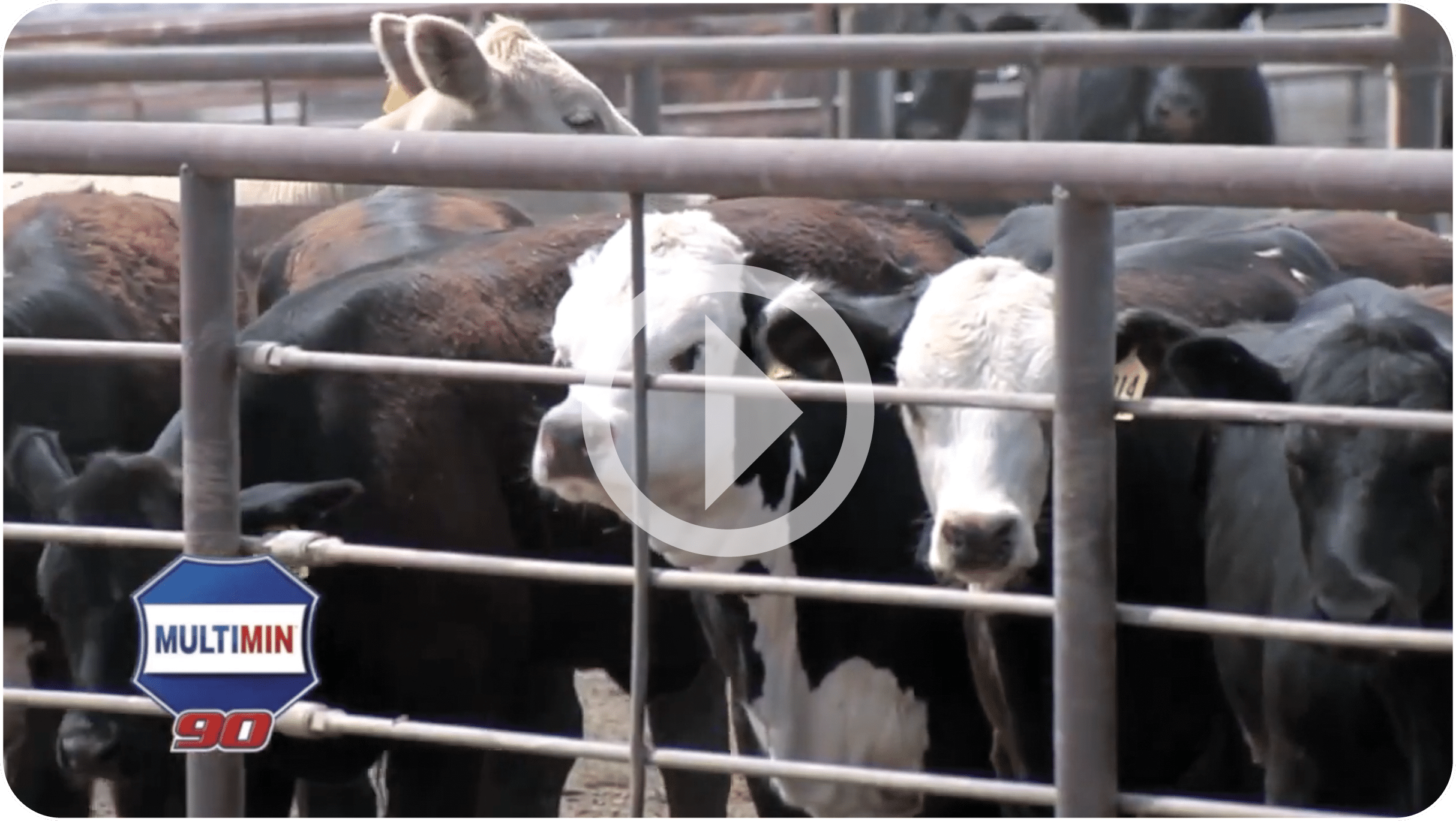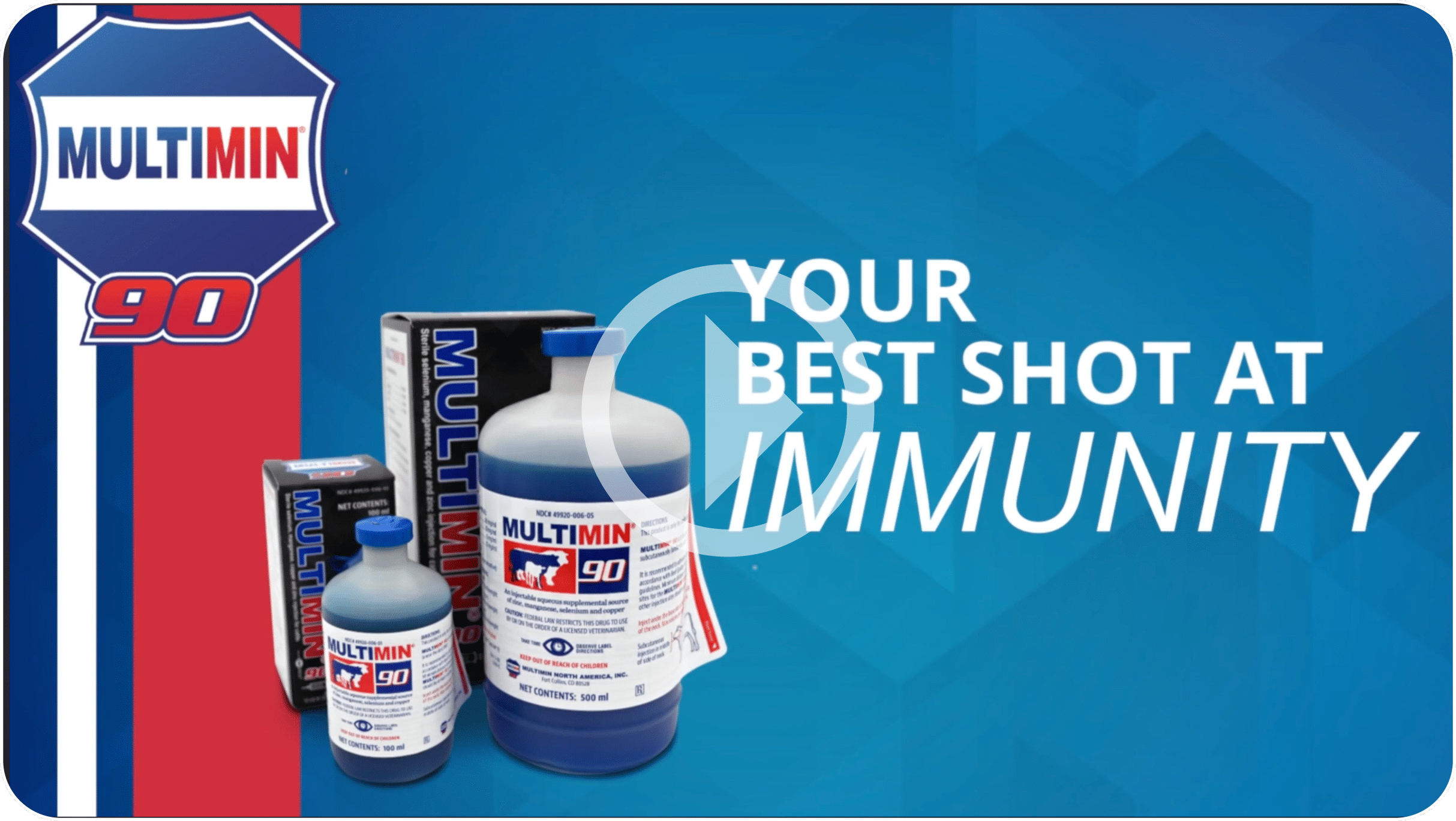
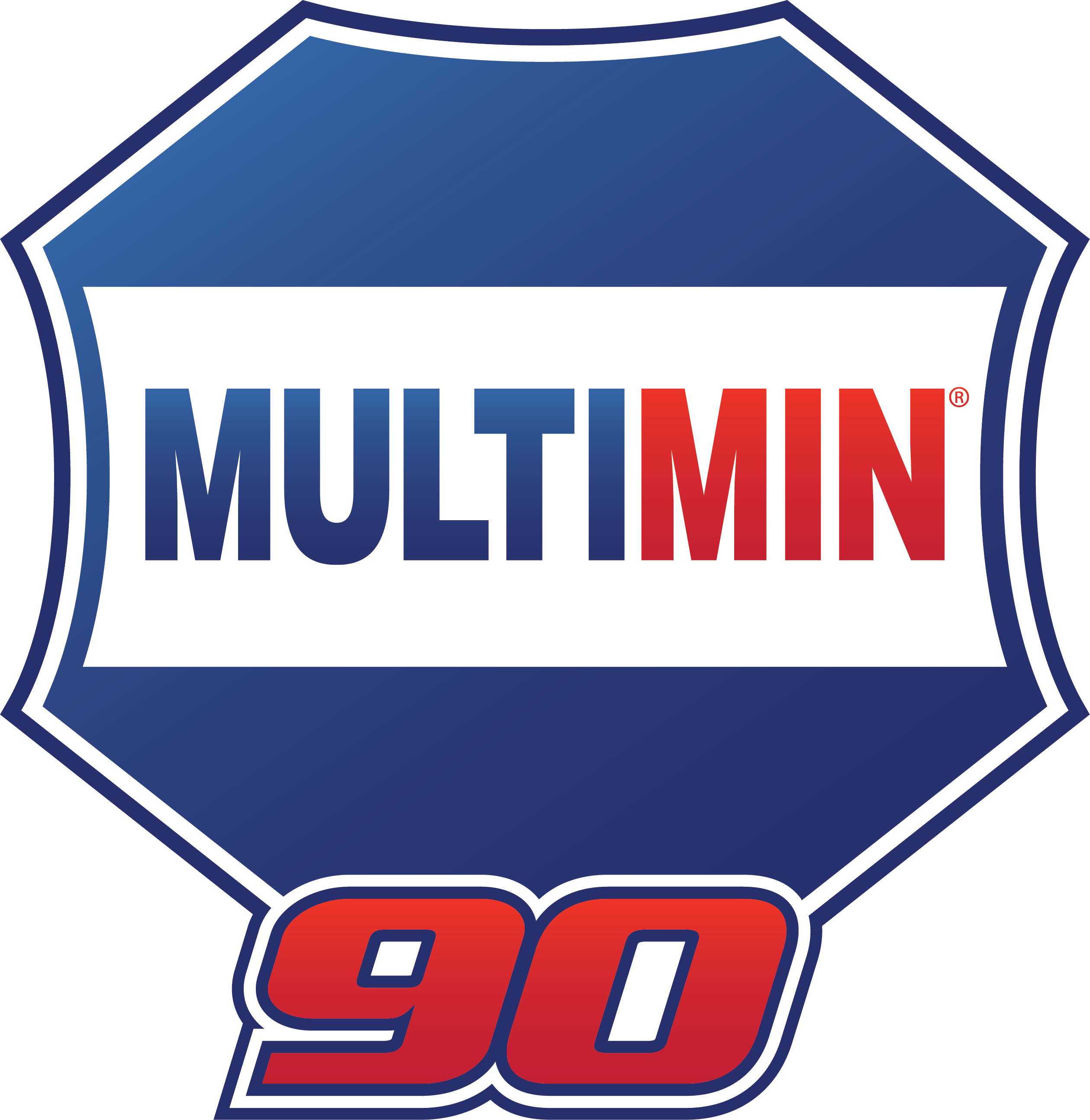
Your Best Shot at Strategic Trace Mineral Supplementation
Supports immunity
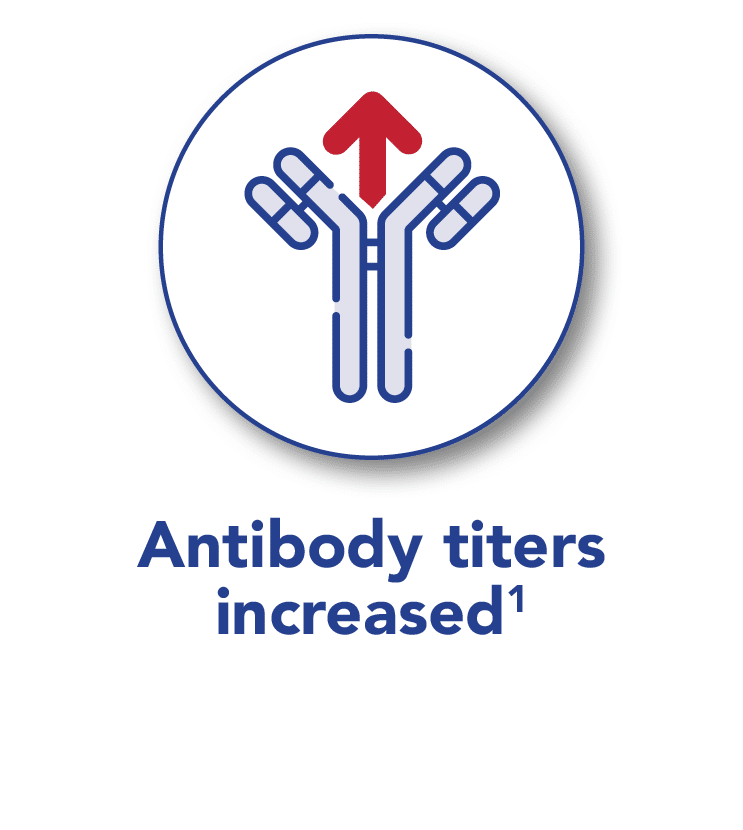
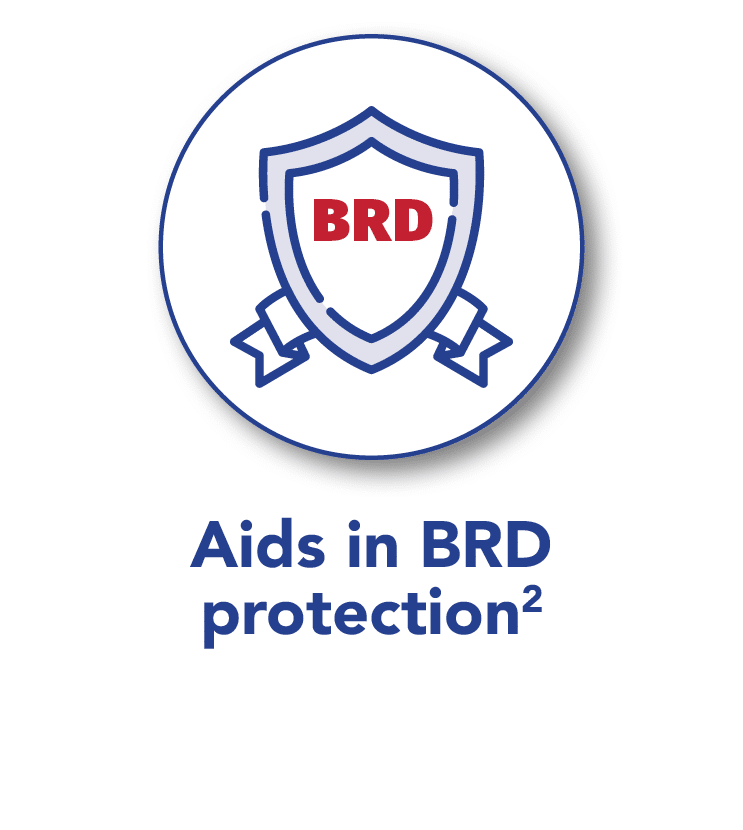
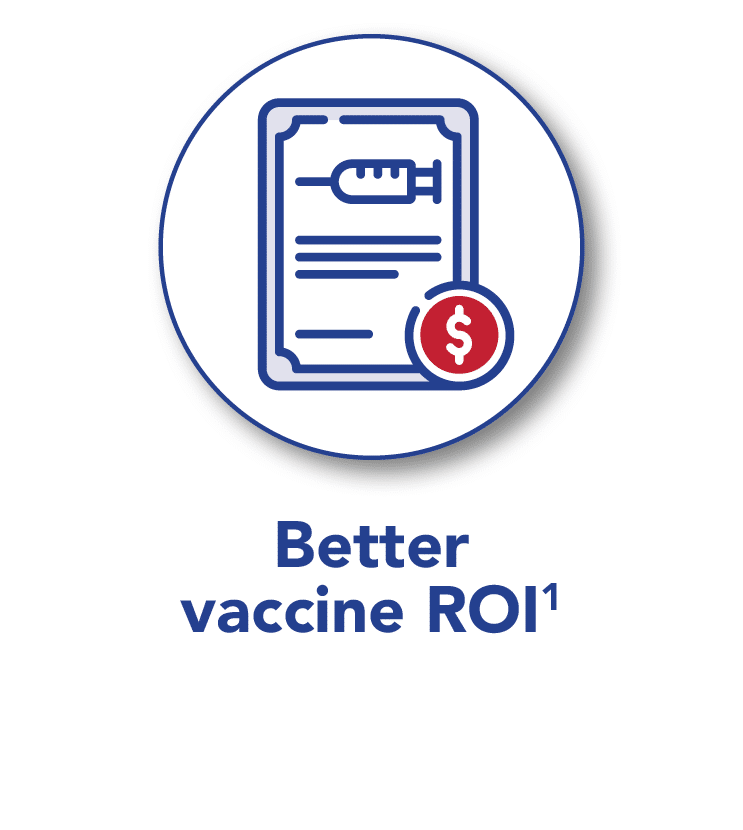
Antibody titers increased
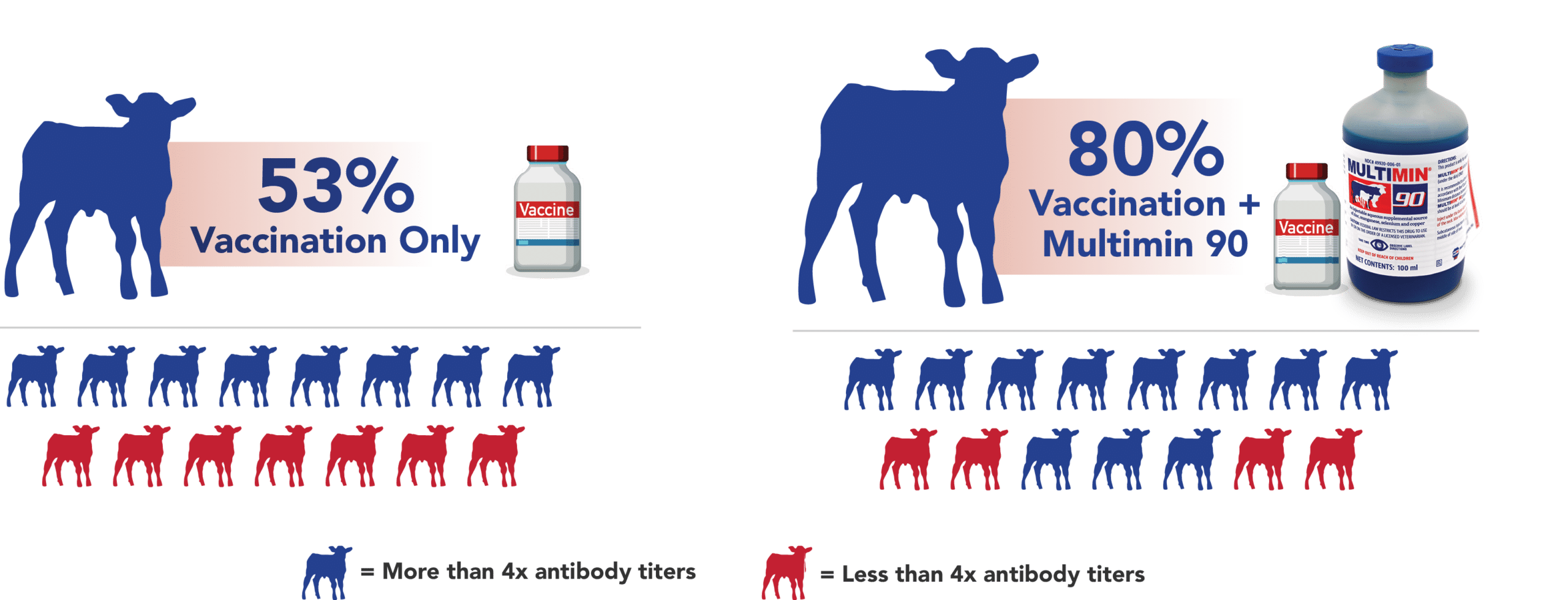
Aids in BRD protection
BRD causes an estimated $800 million to $900 million annually in economic losses from death, reduced feed efficiency, and treatment costs.3 Cattle that do recover after treatment will still contribute to economic losses due to lower performance.
A university study1 demonstrated that injectable trace mineral supplementation as part of a vaccination protocol resulted in increased antibody titer response and enhanced cell mediated and humoral immune response to vaccines. Greater vaccination success should lead to improved protection against BRD and reduced treatments.
Watch the video featuring Dr. Roberto Palomares, associate professor at the College of Veterinary Medicine University of Georgia, as he discusses the benefits of strategic trace mineral supplementation with Multimin 90 concurrently with vaccination in dairy and beef calves to prevent BRD.
Better vaccine ROI
University research results1 showed dairy and beef calves given injectable trace mineral supplementation with Multimin 90, at the same time as vaccines, had stronger immune response and a greater percentage of the herd responding to the vaccine, as measured by antibody titer levels. More cattle responding to vaccinations means better ROI from your vaccines.
Most producers, however, do not measure antibody levels to determine vaccine success. A separate study2 challenged calves with BVDV-2 and IBR to induce illness. The endoscopic images in the video below were captured to compare the clinical effects of the challenged calves following intranasal and booster vaccine with and without trace mineral supplementation by Multimin 90 injection. The video below shows footage of the airways of challenged calves with and without Multimin 90 treatment.
Multimin 90 showed improved immune response in research trials with these vaccine classes:
Testimonials
- Bob WelchWELCH BROTHERS CATTLE
- Dr. L.D. Barker and sons, Dr. Matt Barker and Dr. Mark Barker

